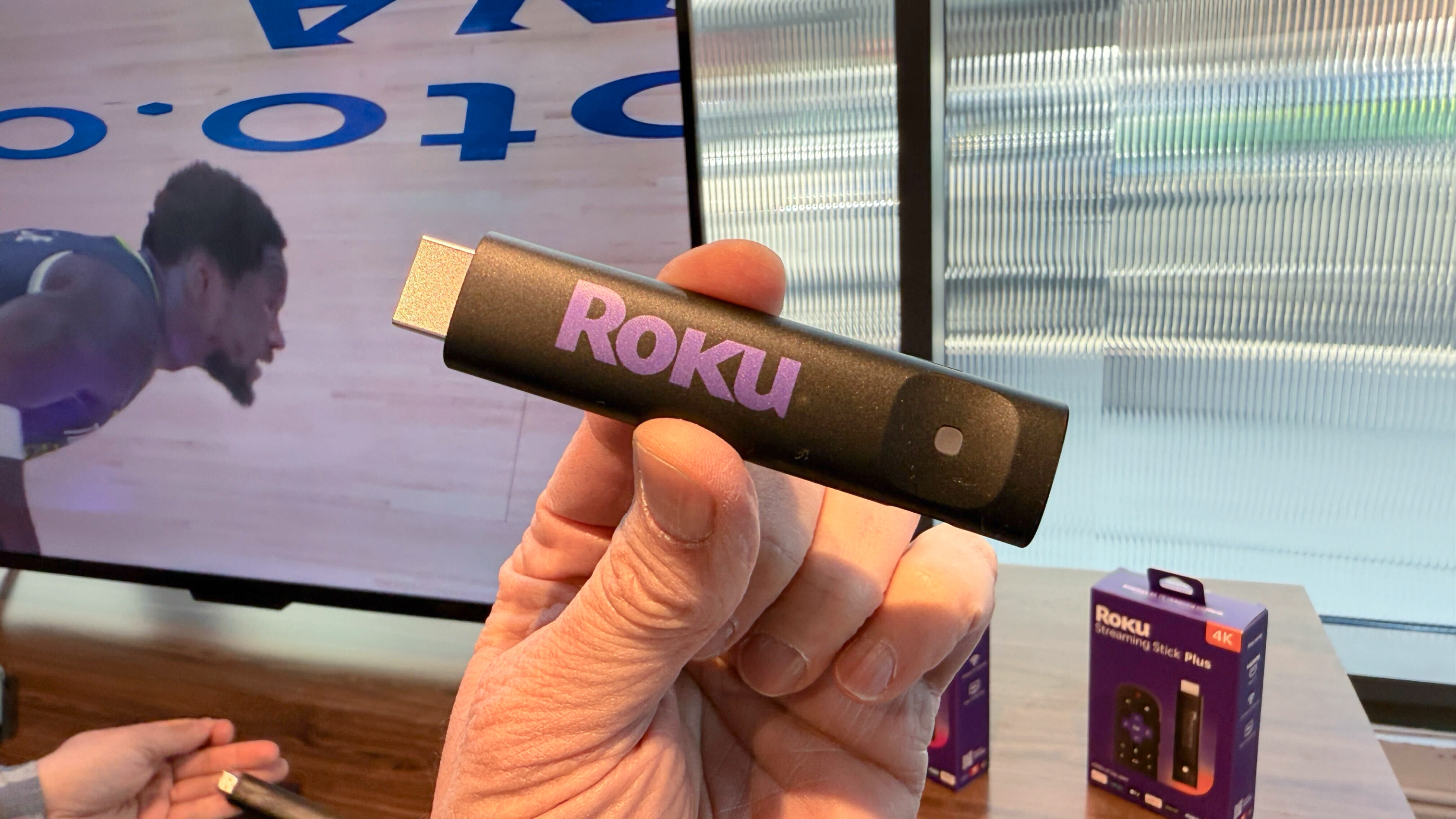The internet’s favorite hot sauce just repackaged for a post-DTC world
You might have a go-to hot sauce already. But for the past year or so, Sichuan condiments brand Fly by Jing has been repositioning to capture mainstream heat seekers, and its subtle packaging update, rolling out now, is the DTC darling’s latest move to optimize for its new distribution channel of choice: mass retail. To call the visual changes a “rebrand” would be a stretch, but the subtle updates point to how the company is pivoting its messaging for analog sales. It’s packaging uses pared-down graphics and copy, with more negative space and a strict focus on must-have details that allow first-time buyers to quickly make a purchase decision just by looking at the product in hand. What is it? What’s it taste like? And what do I put it on? “There’s three seconds that [consumers are] going to see you on-shelf before they make a decision,” says Fly by Jing founder and CEO Jing Gao. In this context, Fly by Jing cares less about brand story. Instead, it designs packaging for the three-second rule. Pivot to retail The refresh comes at a time when retail partnerships are commonplace for brands that originated as direct-to-consumer startups. CPG olive oil brand Graza is in a slew of grocery stores, including Whole Foods. Brands like Rare Beauty, Dieux Skin, and Glossier have diversified e-comm sales with wholesale partnerships at big-box beauty retailer Sephora. IRL shopping experiences continue to be a vital avenue for product discovery and testing, even if many thought the pandemic might kill brick-and-mortar shopping for good. Gao views the broad adoption of retail among DTC companies as a result of the 2021 iOS 14 update, which prompted users to give apps tracking permission. More than 80% opted not to be tracked. This made it difficult for companies to analyze how well targeted ads worked, and therefore more costly to advertise on third-party sites like Facebook and Instagram. Gao sees that moment as the sunsetting of the golden era of DTC, when digital-first brands had to diversify to reach consumers. Fly by Jing was no exception. Fly by Jing has already been making retail inroads. Gao initially marketed the chili crisp as a premium product with a $15 price point. That included premium packaging that highlighted its specialized ingredient sourcing and rich history, in part as an effort to educate consumers and counter prevailing stereotypes around Chinese food as inherently cheap. Fly by Jing has since cut its price point by 30% to make the product more accessible and reach a broader consumer base as it seeks to expand. Gao says the company achieved this by economizing its packaging design with changes like shifting from a pricey embossed decal on glass to a paper label, and finding “efficiencies in logistics and supply chain.” Its products are now available in 11,000 stores nationwide, including at major national retailers like Target, Sprouts, Wegmans, Albertsons, Safeway, and Walmart. As of 2025, it’s in 4,000 Walmart stores. It has also expanded its product categories to include prepared noodles, which launched last year and are relaunching in stores next month with new packaging. The Asian foods category is itself becoming more crowded, with brands like Momofuku and MìLà (formerly Xiao Chi Jie) offering chili crisp and prepared noodles as well. There’s lots of opportunity to go around: The ethnic foods market, which includes Asian cuisine, is expected to reach $200 billion by 2032. Fly by Jing now makes the majority of its sales in retail and is profitable. Although Gao said the company’s tariffs had doubled at the time we spoke in early April, and this has tightened the company’s margins, there are no plans to change its sourcing. She says the company “should be fine” due to cost-savings measures previously put in place and increased velocity in stores. She describes this refresh as a “key part of that.” [Photo: Fly by Jing] Less-is-more labeling The brand’s previous packaging, launched in 2020, took a Dr. Bronner’s more-is-more approach that packed the label with copy and graphics related to the brand story. A Venn diagram in the center of the label included details such as its ingredients sourcing. That graphic has been replaced with a transparent window that allows shoppers to see the product inside. Previous copy described Gao’s founder story, including the reclamation of her birth name, Jing, rather than the Americanized Jenny she’d typically used. Now copy focuses on the product’s taste description and use case. The label still boasts the original line “You will find yourself putting this on everything”—that’s the mainstream play—made more prominent by reducing other copy. One of just a few front-of-label callouts reads: “Makes anything taste better.” The brand also unified product names as variations of its fastest-selling store SKU, its Sichuan chili crisp, to increase in-store velocity and create a sense of familiarity across the product range.
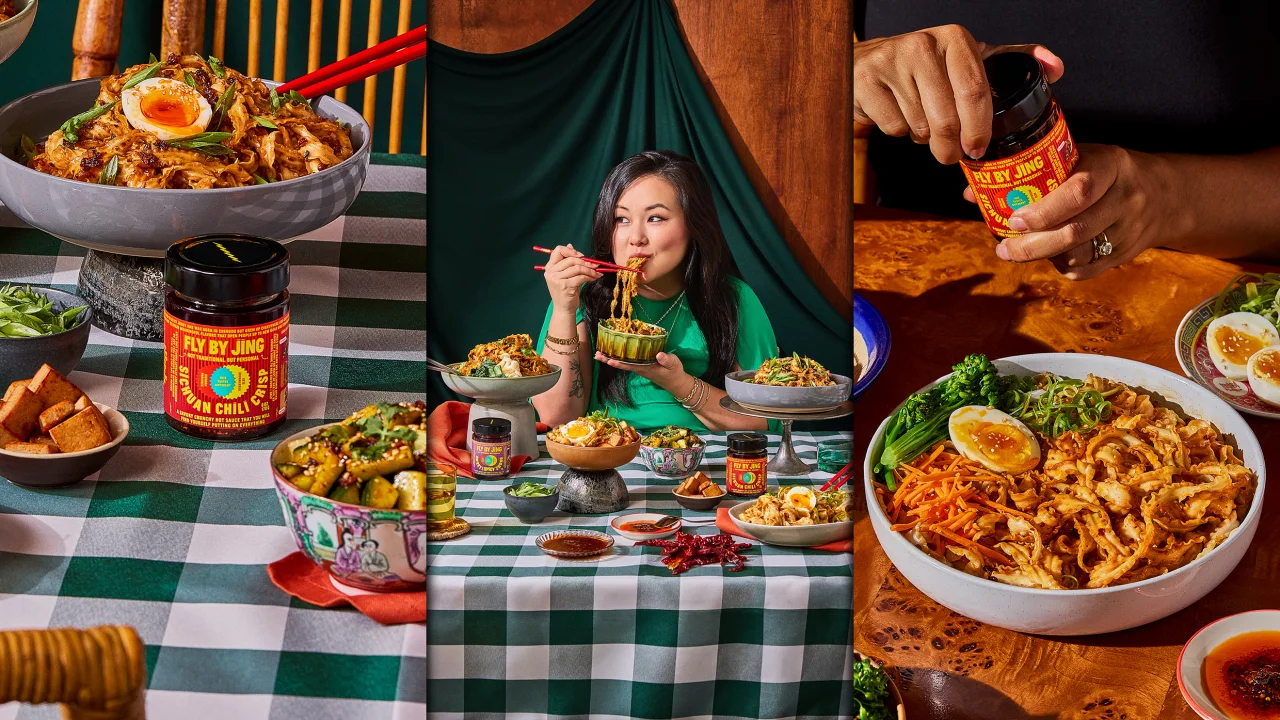
You might have a go-to hot sauce already. But for the past year or so, Sichuan condiments brand Fly by Jing has been repositioning to capture mainstream heat seekers, and its subtle packaging update, rolling out now, is the DTC darling’s latest move to optimize for its new distribution channel of choice: mass retail.
To call the visual changes a “rebrand” would be a stretch, but the subtle updates point to how the company is pivoting its messaging for analog sales. It’s packaging uses pared-down graphics and copy, with more negative space and a strict focus on must-have details that allow first-time buyers to quickly make a purchase decision just by looking at the product in hand. What is it? What’s it taste like? And what do I put it on?
“There’s three seconds that [consumers are] going to see you on-shelf before they make a decision,” says Fly by Jing founder and CEO Jing Gao. In this context, Fly by Jing cares less about brand story. Instead, it designs packaging for the three-second rule.
Pivot to retail
The refresh comes at a time when retail partnerships are commonplace for brands that originated as direct-to-consumer startups. CPG olive oil brand Graza is in a slew of grocery stores, including Whole Foods. Brands like Rare Beauty, Dieux Skin, and Glossier have diversified e-comm sales with wholesale partnerships at big-box beauty retailer Sephora. IRL shopping experiences continue to be a vital avenue for product discovery and testing, even if many thought the pandemic might kill brick-and-mortar shopping for good.
Gao views the broad adoption of retail among DTC companies as a result of the 2021 iOS 14 update, which prompted users to give apps tracking permission. More than 80% opted not to be tracked. This made it difficult for companies to analyze how well targeted ads worked, and therefore more costly to advertise on third-party sites like Facebook and Instagram. Gao sees that moment as the sunsetting of the golden era of DTC, when digital-first brands had to diversify to reach consumers. Fly by Jing was no exception.

Fly by Jing has already been making retail inroads. Gao initially marketed the chili crisp as a premium product with a $15 price point. That included premium packaging that highlighted its specialized ingredient sourcing and rich history, in part as an effort to educate consumers and counter prevailing stereotypes around Chinese food as inherently cheap.
Fly by Jing has since cut its price point by 30% to make the product more accessible and reach a broader consumer base as it seeks to expand. Gao says the company achieved this by economizing its packaging design with changes like shifting from a pricey embossed decal on glass to a paper label, and finding “efficiencies in logistics and supply chain.”
Its products are now available in 11,000 stores nationwide, including at major national retailers like Target, Sprouts, Wegmans, Albertsons, Safeway, and Walmart. As of 2025, it’s in 4,000 Walmart stores. It has also expanded its product categories to include prepared noodles, which launched last year and are relaunching in stores next month with new packaging. The Asian foods category is itself becoming more crowded, with brands like Momofuku and MìLà (formerly Xiao Chi Jie) offering chili crisp and prepared noodles as well. There’s lots of opportunity to go around: The ethnic foods market, which includes Asian cuisine, is expected to reach $200 billion by 2032.
Fly by Jing now makes the majority of its sales in retail and is profitable. Although Gao said the company’s tariffs had doubled at the time we spoke in early April, and this has tightened the company’s margins, there are no plans to change its sourcing. She says the company “should be fine” due to cost-savings measures previously put in place and increased velocity in stores. She describes this refresh as a “key part of that.”
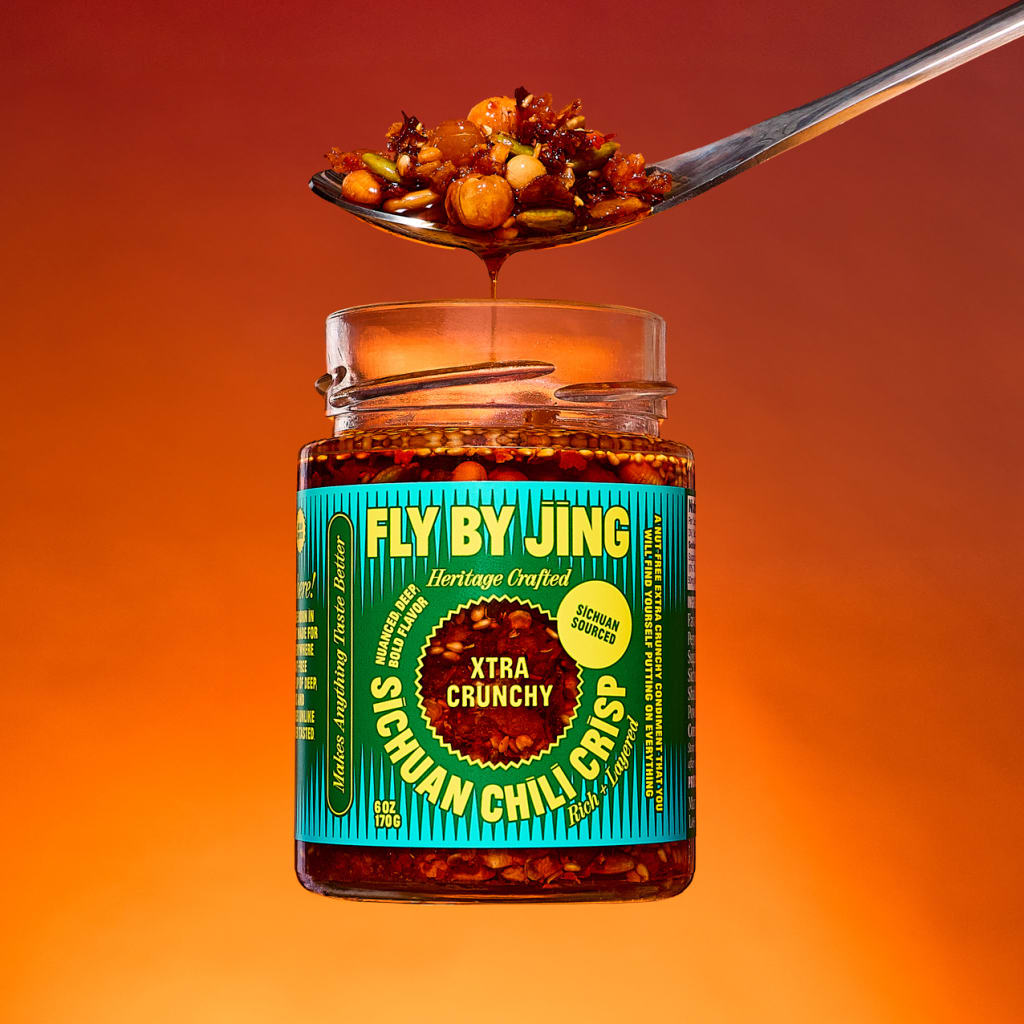
Less-is-more labeling
The brand’s previous packaging, launched in 2020, took a Dr. Bronner’s more-is-more approach that packed the label with copy and graphics related to the brand story. A Venn diagram in the center of the label included details such as its ingredients sourcing. That graphic has been replaced with a transparent window that allows shoppers to see the product inside.
Previous copy described Gao’s founder story, including the reclamation of her birth name, Jing, rather than the Americanized Jenny she’d typically used. Now copy focuses on the product’s taste description and use case. The label still boasts the original line “You will find yourself putting this on everything”—that’s the mainstream play—made more prominent by reducing other copy. One of just a few front-of-label callouts reads: “Makes anything taste better.” The brand also unified product names as variations of its fastest-selling store SKU, its Sichuan chili crisp, to increase in-store velocity and create a sense of familiarity across the product range.

“Online, you could tell this rich brand story. We created a brand universe you can really dive deep into,” says Gao. “But as time went on and as retail became the dominant channel for us, now all of a sudden people are seeing us on shelves for the first time versus on their phone where they can learn more, dig in more.” That’s where the aforementioned three-second rule came in.
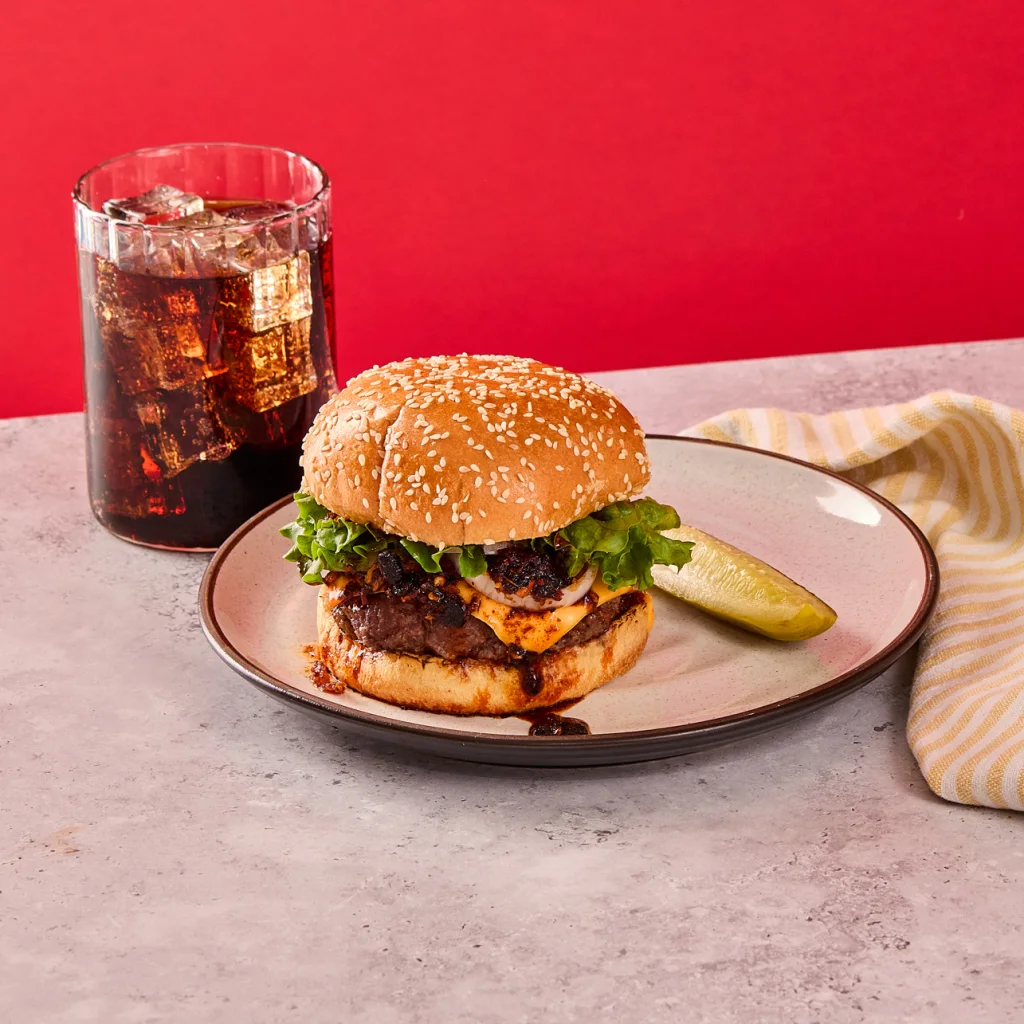
Making mainstream moves
The brand’s retail expansion also meant it was entering markets it hadn’t engaged before, and consumers who were not a part of its initial customer base of “well-traveled, international people [who are] plugged in,” says Gao. “It’s constantly thinking about how do we meet people where they are in terms of their understanding, in terms of their experience?”
Gao recalls a product demo at Costco. The key was to make the pitch fast to catch people as they walked by. So she simplified it by asking passerby if they wanted to try hot sauce. Then she explained the flavors. “We were able to communicate very quickly what the differences were,” Gao recalls. “People were like, ‘Oh, I want the sweet one,’ or ‘I want the crunchy one.’ That was the insight of, okay, maybe we should just pare it back for people instead of calling it Chengdu Crunch—this is a cool name, but now it makes someone think it’s different from chili crisp, when really you use it the same way. It’s just a variation.”

Gao describes one of her early goals as divorcing chili crisp from the idea that it’s a Chinese condiment that can be used only on Chinese cuisine. Product imagery includes chili crisp on pizza, eggs, avocado toast, and ice cream. “That’s what really helped us to bridge the condiment into the mainstream,” says Gao. “But if you look at this old jar, that’s not immediately apparent because there’s such a rich story here. There’s so many layers that if someone were just to interact with it on a very basic [level], from an ‘I just care what it tastes like’ standpoint, they’re not going to be able to uncover that. So we wanted to . . . present the top three things that you should know about it, and then open up the window and allow someone in. Then you’ll see [it] a bit differently now, right?”
The packaging design changes are indicative of the brand’s mainstream play, and an ambition to become a household product synonymous with a product category, like Cholula hot sauce or Huy Fong Sriracha. Can Fly by Jing become the Heinz of chili crisp? No matter the food, the brand wants new consumers to have the same inclination to reach for its jar and think Eggs, avocado toast, or dumplings—it has to be Fly by Jing.








































































































































































![[The AI Show Episode 144]: ChatGPT’s New Memory, Shopify CEO’s Leaked “AI First” Memo, Google Cloud Next Releases, o3 and o4-mini Coming Soon & Llama 4’s Rocky Launch](https://www.marketingaiinstitute.com/hubfs/ep%20144%20cover.png)



















































































































![Did I Discover A New Programming Paradigm? [closed]](https://miro.medium.com/v2/resize:fit:1200/format:webp/1*nKR2930riHA4VC7dLwIuxA.gif)
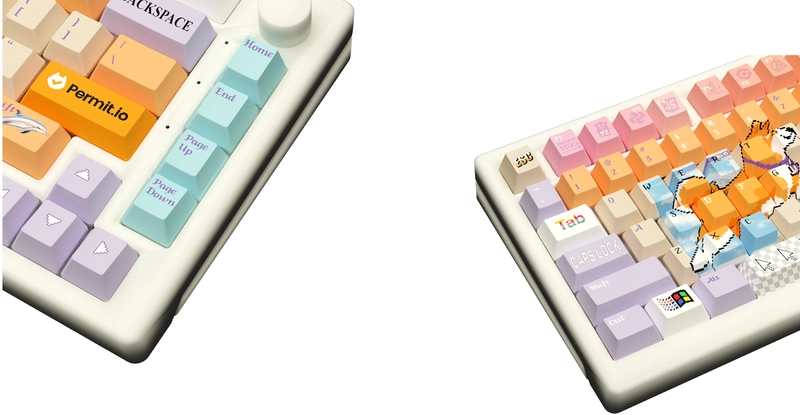


































































-Classic-Nintendo-GameCube-games-are-coming-to-Nintendo-Switch-2!-00-00-13.png?width=1920&height=1920&fit=bounds&quality=70&format=jpg&auto=webp#)




.jpg?width=1920&height=1920&fit=bounds&quality=70&format=jpg&auto=webp#)






















































.jpg?#)
































_Wavebreakmedia_Ltd_FUS1507-1_Alamy.jpg?width=1280&auto=webp&quality=80&disable=upscale#)




















































































































![Hands-On With 'iPhone 17 Air' Dummy Reveals 'Scary Thin' Design [Video]](https://www.iclarified.com/images/news/97100/97100/97100-640.jpg)
![Mike Rockwell is Overhauling Siri's Leadership Team [Report]](https://www.iclarified.com/images/news/97096/97096/97096-640.jpg)

















